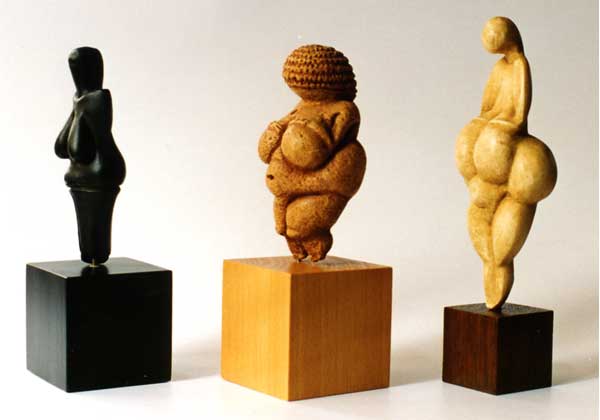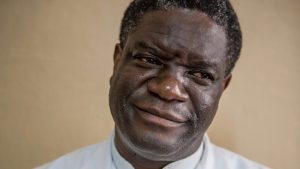Since the early stages of human life and prosperity, art has used by different societies to display their craftsmanship and to demonstrate their beliefs. Two types of artistic creations are the paleolithic Venus figurines from southern France and the bronze age jade figurines of China. These two art pieces contrast in both usage and symbolism. The figurines in the paleolithic, European era were made by hunters and gatherers, while jade figurines during the Bronze Age are part of an advanced civilization. Still, both provide scholars insight into the practices and goals of the people at the time.

One of the earliest forms of art includes the figurines from the European paleolithic era. Created by homo sapiens about thirty thousand years ago, they were called Venus figurines by scholars after the Roman goddess of love Venus, because they depict the body of a woman. Today, more than one hundred have been found and they all have similar characteristics. The figurines range in height but are on average 150mm tall. They are made from materials such as steatite, calcite, limestone, bone, ivory, and clay.1
Today we wonder about the meaning and purpose behind the faintness of facial features and hands in these figurines, yet we note the emphasis on the woman’s hips and legs. Although we do not yet have definite answers to this question, there are many theories available. One popular theory is that the societies that created these figurines had a deep interest in female fertility. Other theories mention their hope for survival and fear for extinction.2 A less popular and more controversial theory is the possibility that Venus figurines were self portraits.3 Still, different theories are necessary in order to better comprehend the motifs behind the Venus figurines and their crafters.

In contrast to the Venus figurines in Europe, Chinese jade figurines offer a clearer sense of the usage of art in the Bronze Age. Jade figurines were often buried with wealthy individuals along with their former slaves, food, jewels, and many other objects. Although the jade figurines took very long to make and were a process of hard labor, their symbolism of prosperity and luxury in Chinese ceremonial traditions demonstrate the practice of ancestral worship and how important it was to them. Because they believed spirits passed into another realm of existence, from which they had the power to affect future generations, tombs were lavished with tools so that masters might live plentifully along with sacrificed slave bodies that would continue to serve their master. For example, in the tomb of lady Fu Hao, wife of the Shang king Wu Ding, 755 jade carvings, 468 bronze objects, 130 weapons, and 4 mirrors were buried.4
Although prehistoric pieces such as figurines, cave paintings, and carvings are often overlooked because of the ambiguity of their meaning, they convey people’s emotions, ideas, and talents. Creations such as the Venus and jade figurines provide the world insight into the practices of our ancestors and the kinds of resource available to them. They serve as a timeline and teach us about their interests and abilities in eras as diverse as the European Paleolithic and Chinese Bronze Ages.
- Kaylea Vandewettering, “Upper Paleolithic Venus Figurines and Interpretations of Prehistoric Gender Representations,” PURE Insights 4, no. 1 (May 29, 2015), http://digitalcommons.wou.edu/pure/vol4/iss1/7. ↵
- Jerry H. Bentley, Herbert F. Ziegler, Traditions and Encounters: A Global Perspective on the Past Volume 1: From the Beginning to 1500 (New York, NY: McGraw-Hill, 2011), 14. ↵
- Kaylea Vandewettering, “Upper Paleolithic Venus Figurines and Interpretations of Prehistoric Gender Representations,” PURE Insights 4, no. 1 (May 29, 2015), http://digitalcommons.wou.edu/pure/vol4/iss1/7. ↵
- Jerry H. Bentley, Herbert F. Ziegler, Traditions and Encounters: A Global Perspective on the Past Volume 1: From the Beginning to 1500 (New York, NY: McGraw-Hill, 2011), 92-93. ↵



61 comments
Alejandra Chavez
This article was extremely interesting to me because I’ve heard of these figures. Ii was great to learn about them and their importance and that their meaning has not been discovered. These figurines are beautifully done for its time period and given all the other factors. I wonder what else was used for burials and if there are similar figures that have yet to be discovered.
Steven Hale
I have always just thought of art as decorative, with very little tangible value, but it is amazing how much we have been able to learn about the past from something as small as figurines. We can make assumptions about the way people saw themselves and each other from how they are depicted, and we can draw conclusions about social structure from where and in what quantities the figurines are discovered.
Donte Joseph
When I think of art I usually think of things such as paintings, music, or tattoos. I tend to forget that sculptures are also considered art, but this article will help me remember next time I think of different forms of art. Another realization is that art has many different interpretations as well as that of the artists like fertility in Chinese society.
Hailey Stewart
I have heard the theory that the sculptures of Venus figurines were self-portraits sculpted by women from their own perspective. I enjoyed this article which was circled well around the theme, art imitates life and therefore life imitates art. The second-to-last paragraph in particular makes sense that the Chinese used art to reflect the best parts of their lives, which was their luxury.
Stephanie Silvola
I believe that the article did a great job describing the art work’s meaning on the fertility of women. Being a woman art major, seeing these artworks with different body shapes of women’s body brings me to attention. Women have been body shamed for a long time and seeing these artworks back in old times leave me to believe that women were loved no matter their shape and this article brings light into that perspective indirectly. This article was well structured and I like the way the writer brought attention to both Chinese and European artwork.
Alexander Manibusan
First off, why so many bronze objects? I guess they truly believed that you can bring anything with you to the spirit realm. As the for the Venus figurines, I guess they will always be something of a mystery. I do find it interesting, that these figures have been crafted by many people from many different time periods. It shows that art and humans go way back.
Sofia Andrade
I had heard of the figurines of the European paleolithic era and their relatedness to fertility. However through reading this article I learned about the Jade figurines of China which represents the importance of fertility in the Chinese society as well. The difference in the material used for both of these figurines was very interesting.
Alexandra Rodriguez
I have always loved the curvy sculptures from the past. Through research I have done I too found theories about fertility, and worship of the female anatomy. I personally have developed an art style that involves the emphasis on the curves of women after I had done research on the Chinese and Aztec sculptures. The similarities in art in regions that are very diverse and also far apart.
Mariah Cavanaugh
I have always been fascinated by the diversity of women’s bodies depicted in these statues. I did not, however, realize how faint their facial features and hands are. What an interesting observation. It makes sense that their forms would be linked to fertility, but I find the other theory, that they are self-portraits, more fascinating. That leads to the question, is this how women saw themselves or are the statues interpretations? Great job!
Alexandra Cantu
This article was extremely exciting for me since I never knew about these figurines; I find strange that their meaning has not been discovered and that they were not fully examined. These figurines are very well done for such an early time period and should have been fully checked out. I wonder what else they were potentially used for many burials. We may never find out. This was a good article.